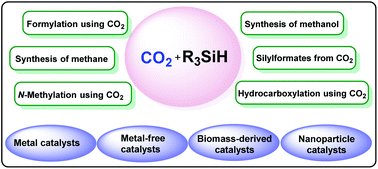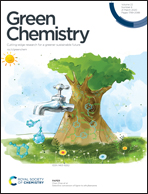Catalytic transformation of CO2 into C1 chemicals using hydrosilanes as a reducing agent
Abstract
Utilization of CO2 for the synthesis of fine chemicals and pharmaceuticals has attracted tremendous attention. In fact, reductive transformation of CO2 is also an interesting approach in this direction. Obviously, using hydrogen as a reducing agent is the most promising pathway for this reductive transformation. However, alternative to hydrogen, hydrosilanes have been also in the forefront due to their ready availability, nontoxic nature and easy handling procedure. Based on all this information, this work summarizes the recent applications of hydrosilylation of CO2 using different catalysts such as metal catalysts, organocatalysts, and heterogeneous catalysts.



 Please wait while we load your content...
Please wait while we load your content...